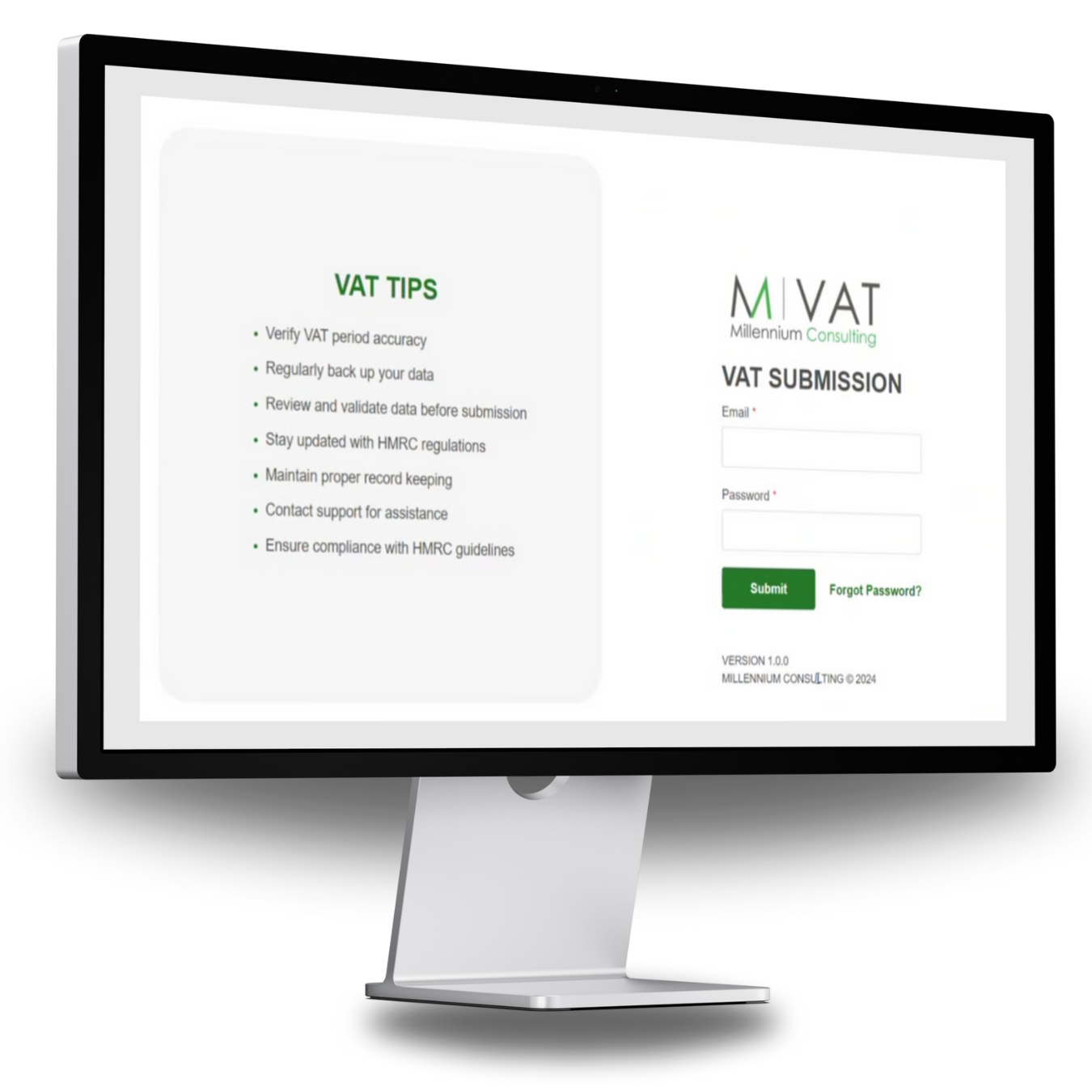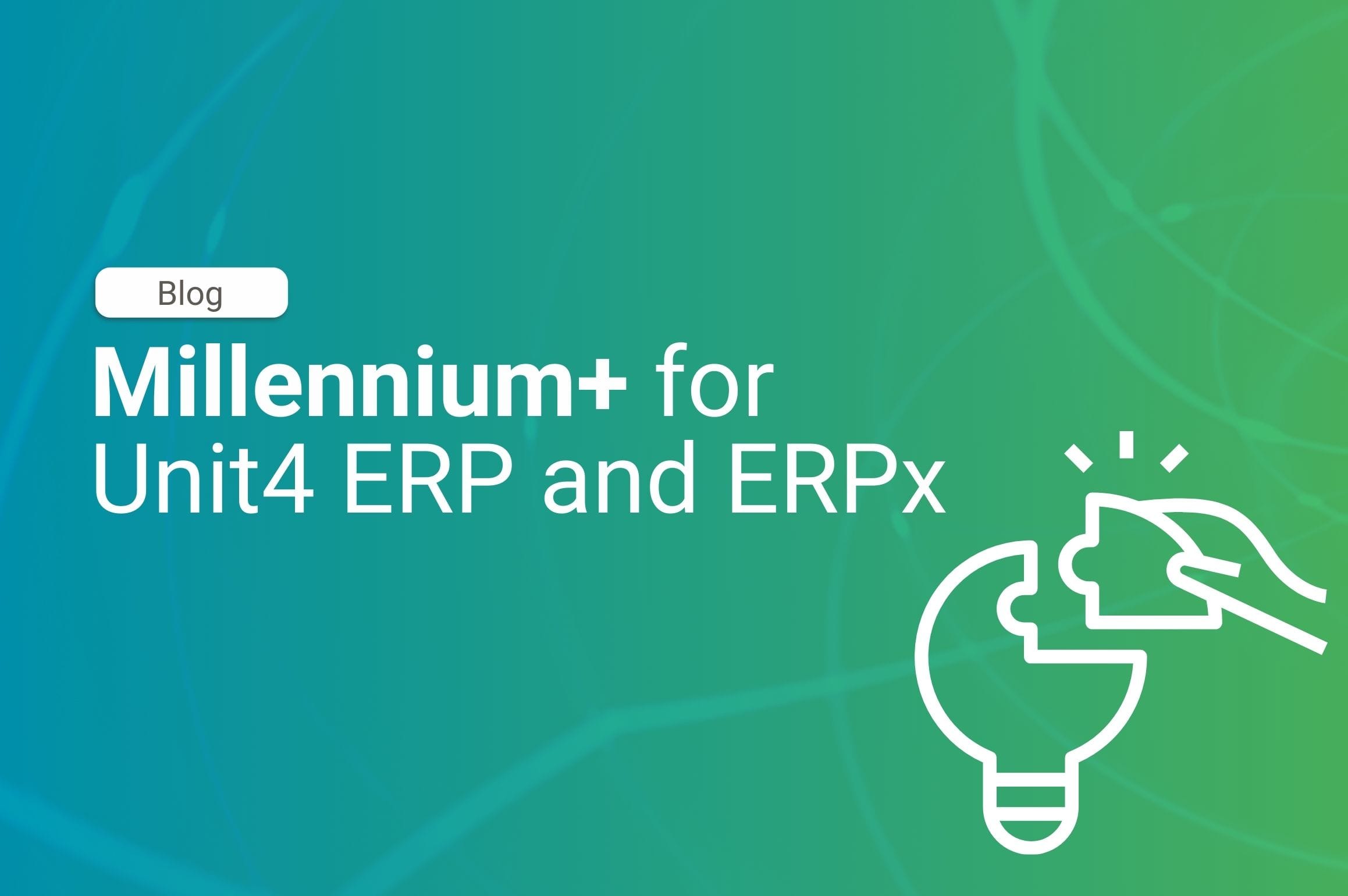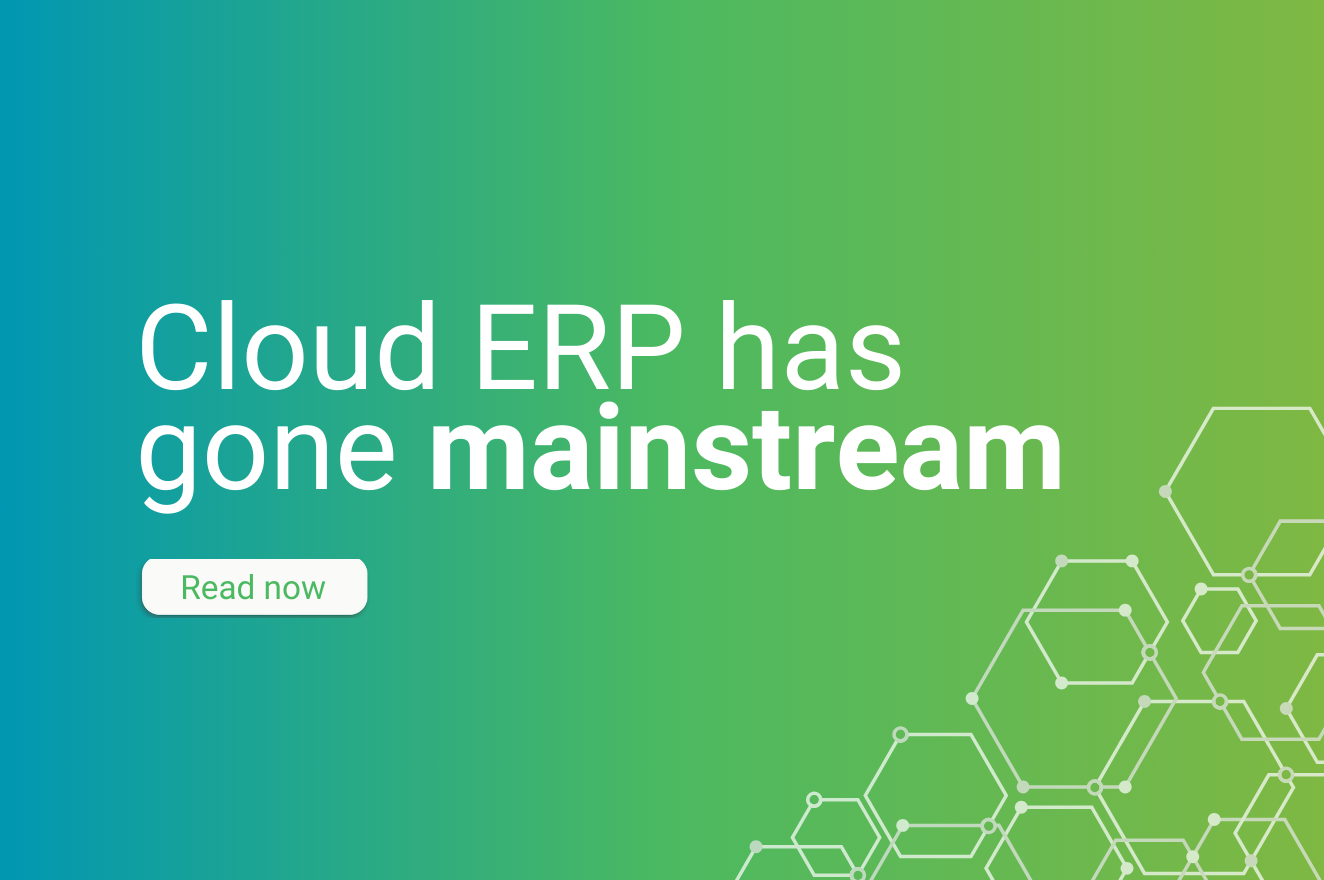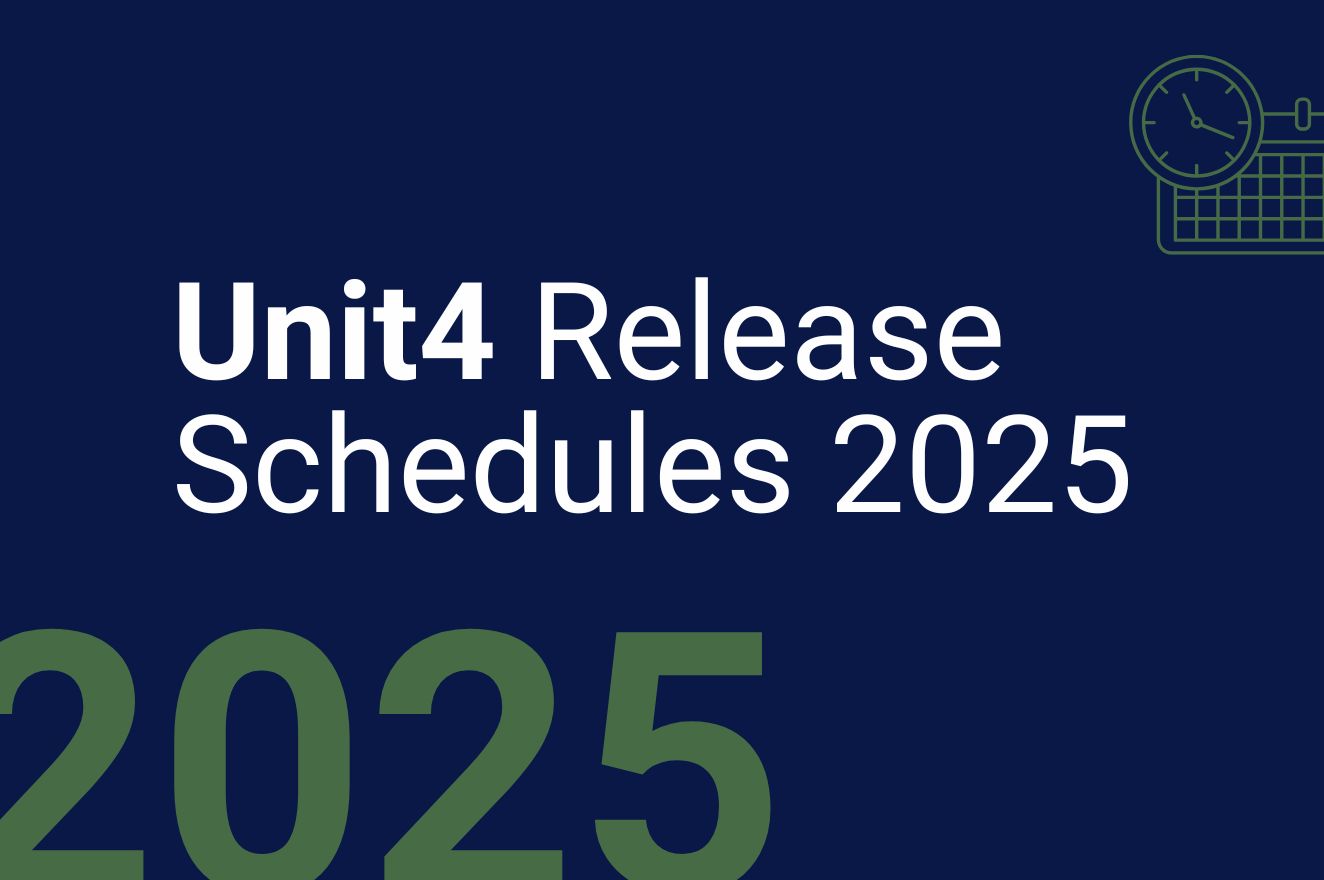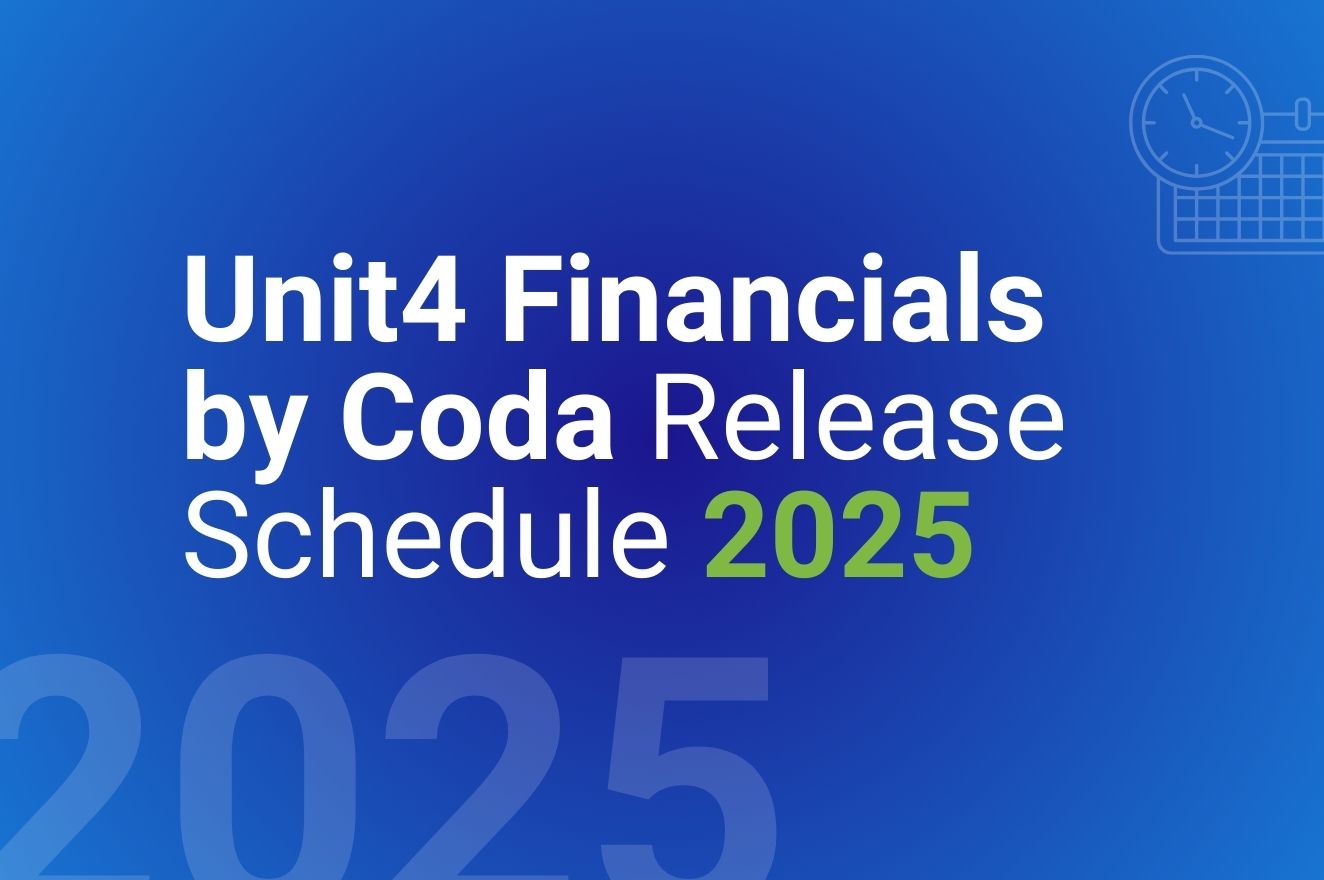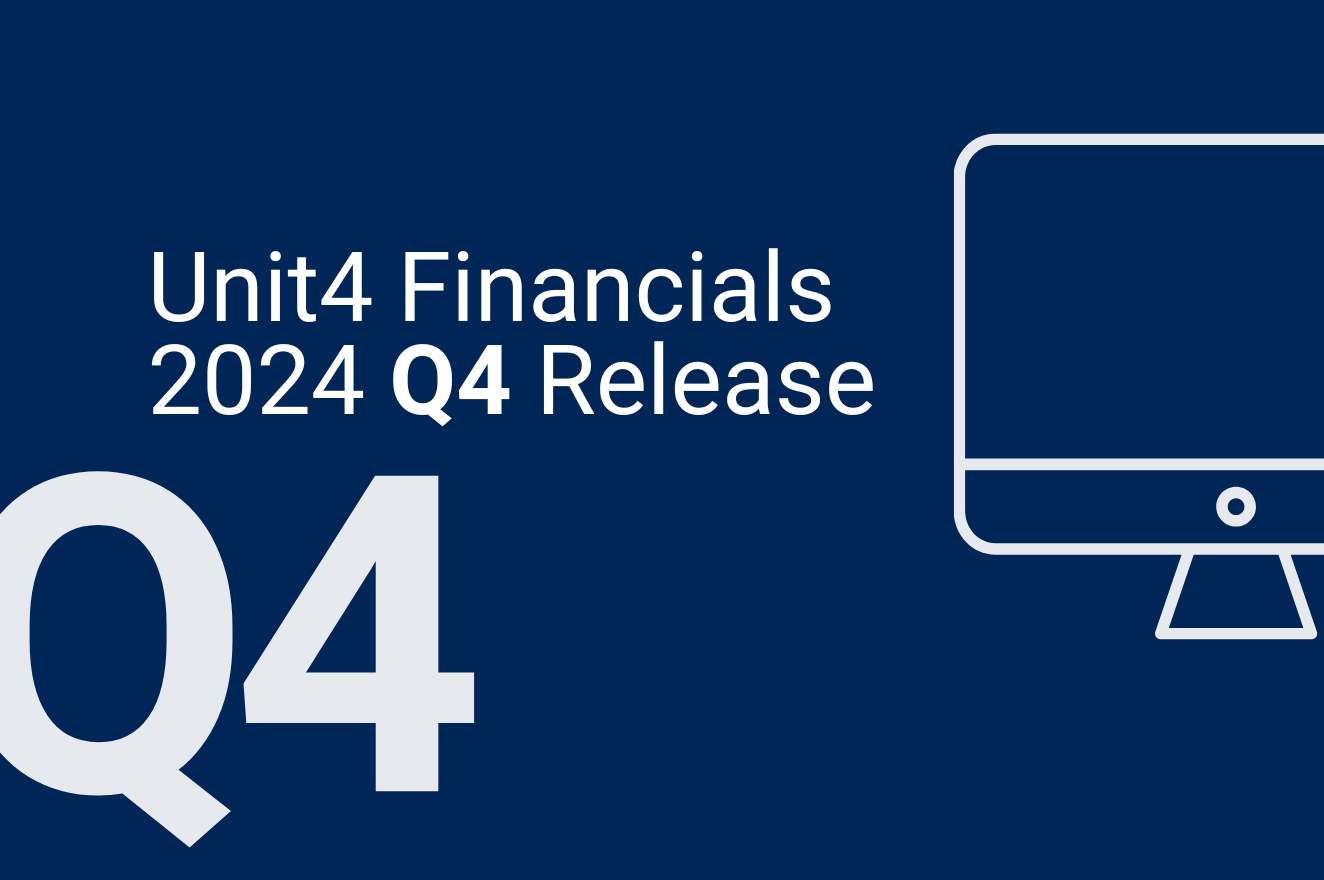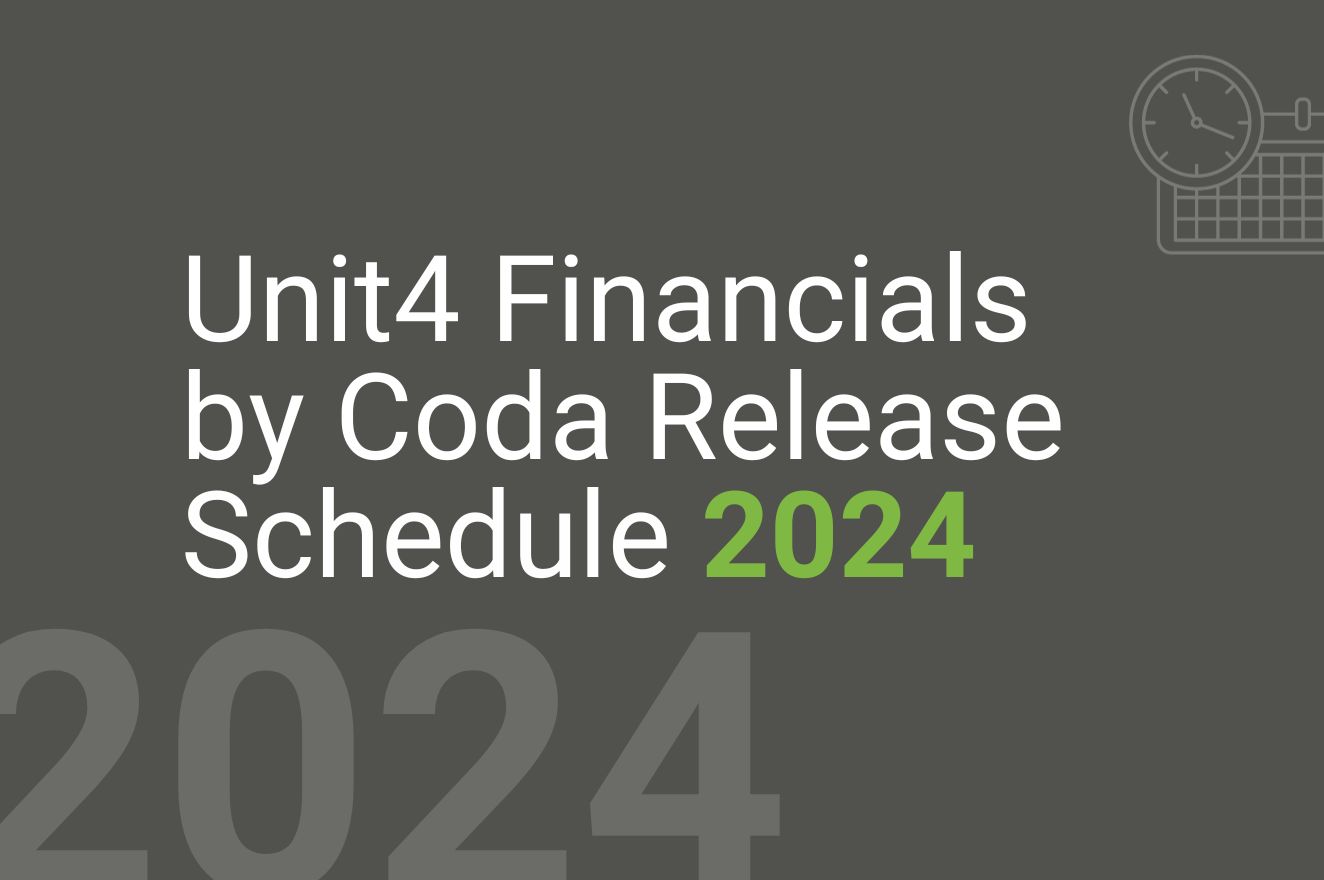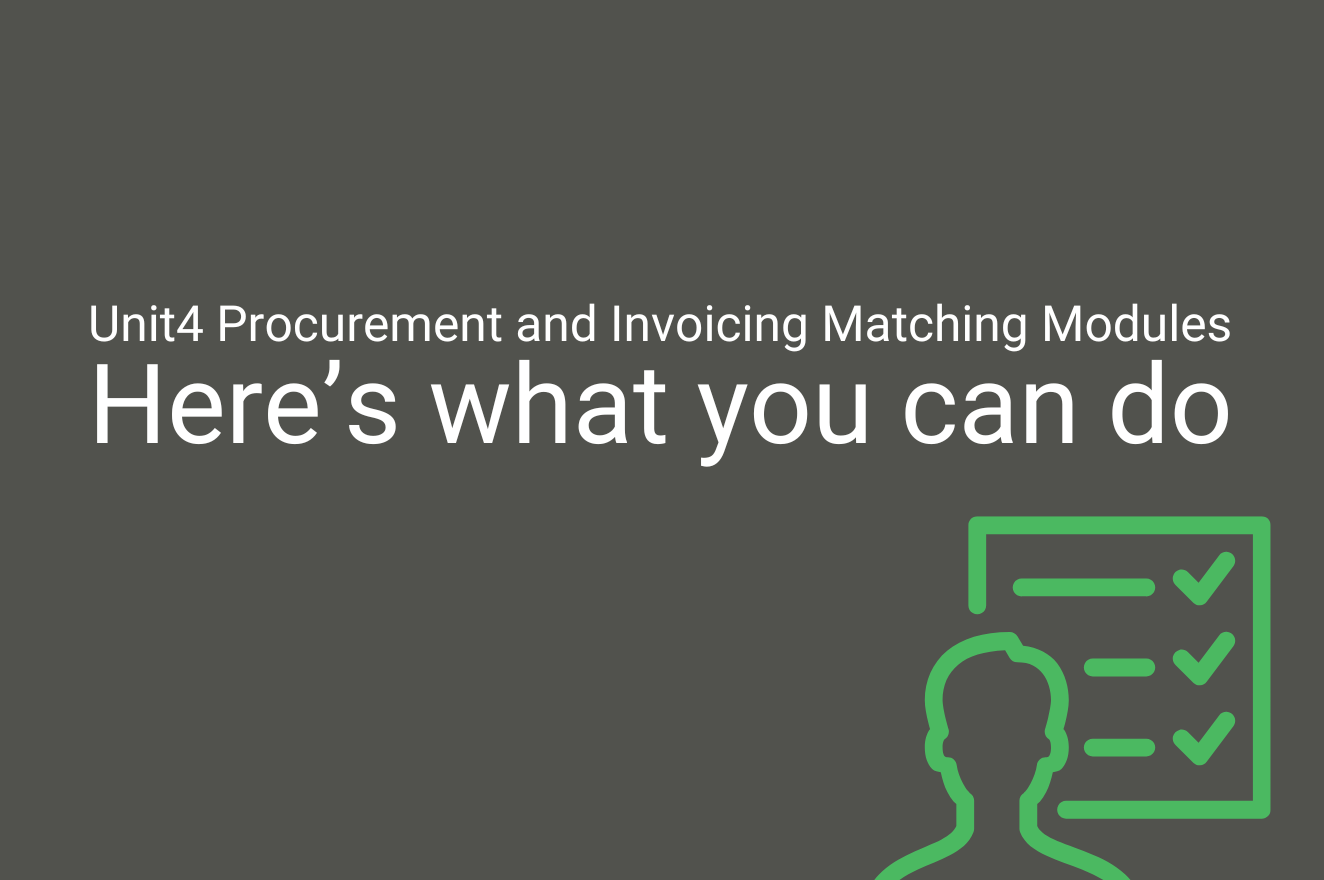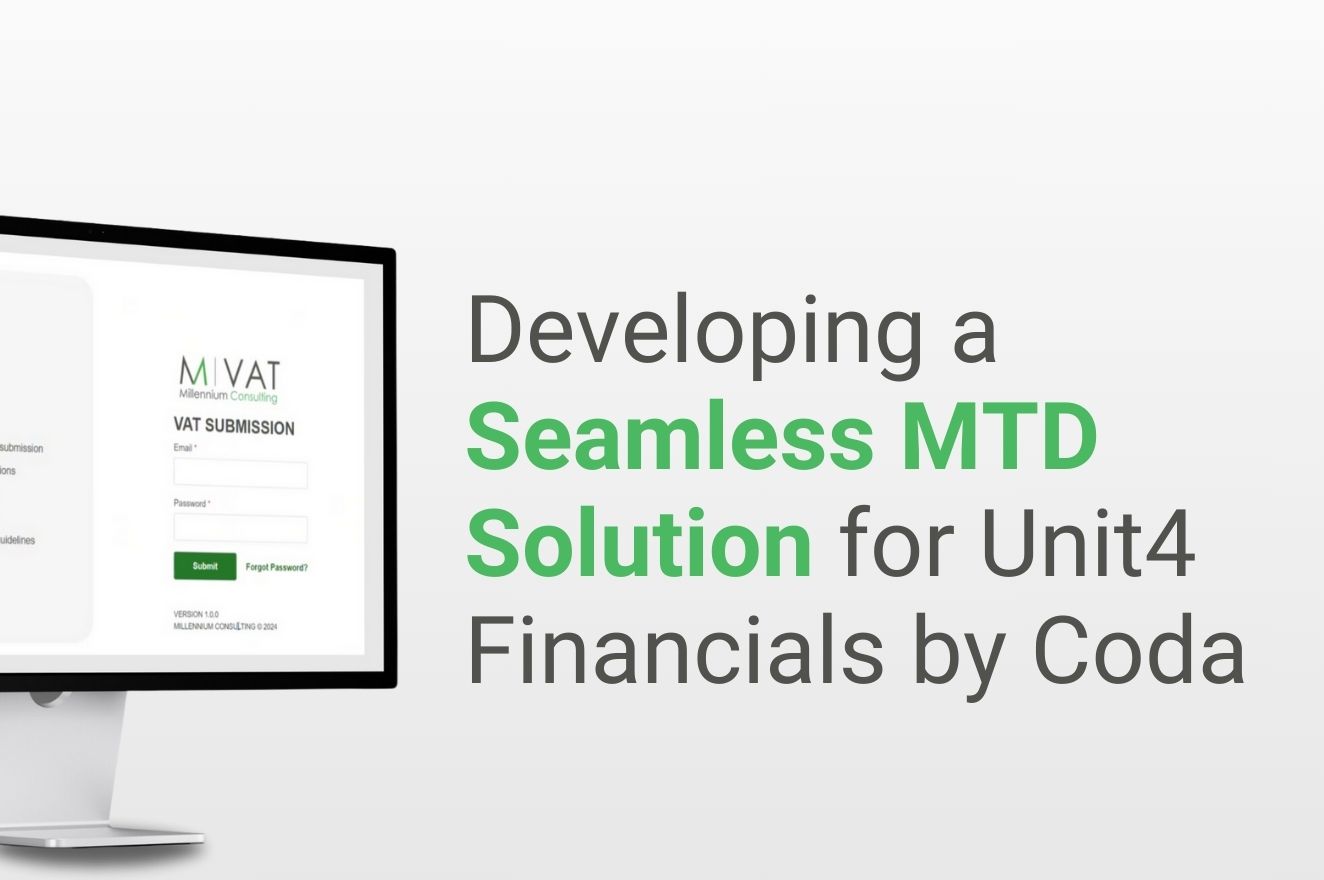Could you be fooled by a deepfake? Why CFOs need to boost their cyber awareness
Could you be fooled by a deepfake? Why CFOs need to boost their cyber awareness
Over the past few years, the social engineering threat has stepped up a gear, with criminals putting AI to work to mount spectacularly convincing fraud scams. As keepers of the purse strings, corporate finance professionals are prime targets in this new wave of cybercrime.
Here’s a closer look at the evolving social engineering landscape and the guardrails you should have in place to keep your business safe.
Deepfakes: no longer the stuff of sci-fi
Last year, CFO Dive reported how the UK engineering group Arup lost approximately $25 million after scammers used AI-generated “deepfakes” to pose as the company’s CFO and dupe an employee to transfer cash into a number of bank accounts. An Arup staff member got a fake message, claiming to be from the company’s CFO, regarding a “confidential transaction”. Following a video conference with the false CFO and other AI-generated employees, the employee executed transactions to five different Hong Kong-based banks.
In July, a Ferrari executive received a series of messages from an unknown number, purporting to be from the company’s CEO, Benedetto Vigna. The messages detailed a company acquisition, advising the Ferrari exec to maintain discretion and that an NDA would be needed. Following the texts, the executive received a phone call from the same number, with the caller mimicking Vigna’s distinctive voice (subsequent inquiries revealed that this had been created with an AI voice clone). Despite the scenario’s plausibility, the executive grew suspicious of certain aspects of the caller’s intonation. The exec asked the caller the name of a book Vigna had recommended to him just a few days earlier. The call suddenly ended.
How common is the deepfake problem?
Evidence suggests that sophisticated AI-driven fraud is now part of the mainstream.
A 2024 Medius poll of 1,533 US and UK finance professionals suggested that just over half (53%) of corporations have been targeted with financial scams using deepfake technology, with 43% falling victim to such attacks. Another report suggested that in 2023, deepfake incidents targeting the fintech sector increased by 700%.
According to Deloitte’s Center for Financial Services, total losses from financial fraud in 2023 amounted to $12.3 billion. By 2027, generative AI is predicted to enable losses to reach $40 billion.
The most popular deepfake techniques include the following:
- Deepfake voice scams. With just a few seconds of audio, scammers use AI tools to clone a person’s voice. They then make fake phone calls or submit voicemails impersonating key company insiders
- Deepfake video scams. Based on snippets from, for example, YouTube or corporate webinars, AI can generate fake video footage of a real person. The level of sophistication in this area has now reached a point where it is possible to clone a company executive’s face and voice to conduct entire real-time video conference calls
- Fake ID and social media scams. AI can generate realistic fake profile pictures for scam accounts. These profiles can then be used as broader corporate fraud attempts
- Fake AI-generated documents. AI can create counterfeit passports, IDs and other documents. These forgeries can help scammers bypass security checks in financial fraud and identity theft scams
A big part of the problem is that deepfake technology is available to pretty much anyone – if you know where to look. A booming dark web cottage industry sells scamming software of various levels of sophistication from $20 to thousands of dollars. You do not need advanced AI skills to mount an attack; you need cash.
Deepfakes and the wider social engineering landscape
Phishing – i.e. scammers attempting to trick people into revealing sensitive information – has long been part of the cyber threat landscape. An estimated 3.4 billion emails a day are sent by cybercriminals, designed to look like they come from trusted senders, which amounts to over a trillion phishing emails per year.
Finance leaders must be especially wary of ‘bespoke’, personalised attacks. Spear phishing is where messages – ostensibly from a known or trusted party, such as a supplier or customer – are sent to targeted individuals to induce them to reveal information or take specific actions. A highly refined version of this is known as “whaling”, where precisely engineered spoofing messages are created to trick CEOs, CFOs, and other senior stakeholders.
According to Barracuda, spear phishing campaigns make up only 0.1% of all email-based phishing attacks but are responsible for 66% of all breaches. The more targeted and personalised the social engineering campaign, the more likely it is to be successful.
Against this backdrop, deepfake technology extends the fraudster’s toolkit. It sits alongside existing phishing techniques, injecting them with an extra layer of realism.
For example, an attacker does some homework on your company. They obtain the details of your CEO and finance team members via LinkedIn. They hone in on an individual whose job title suggests the authority to execute substantial cash transfers. Looking at the company news section of your website, they also notice details of a couple of new deals or partnerships that they can use as possible backdrops from which to concoct a story.
Lifted from a webinar on your site, they have an excellent data extract of your CEO’s voice. Using a replication tool purchased on the dark web, they can use this for cloning and live voice manipulation.
Using a spoof email, they message the finance team member, pretending to be the CEO. The message requests a quick chat to discuss an urgent transaction. A call is arranged, and the fake CEO tells the employee where to send the cash.
How to prevent deepfake attacks
Good practice includes the following:
Raise awareness
Most cyber attack techniques rely on human vulnerability, carelessness, and/or a lack of awareness on the victim’s part. This applies to all types of social engineering, including deepfakes.
As we’ve seen, there’s nothing new about phishing, so you should have awareness training in place already (if not, this is an area that needs to be addressed). This should include training on the telltale signs of phishing to look out for, such as irregular email domains or attachments, display name mismatch, or an undue sense of urgency within requests.
Update your training to cover the threats raised by advanced AI. This should include the signs of deepfake attacks, such as unnatural facial movements and expressions, slight visual distortions and imperfect lip synching in video, and slightly robotic speech patterns and inconsistent tone in audio.
Have set procedures in place
Scammers thrive on inconsistency. If payments are routinely made in an ad-hoc way within a company, it becomes much more challenging for employees to spot a fake email, call, or Zoom session from a genuine one.
Especially for financial transactions, ensure you have set consistent protocols. Examples of this may include:
- The requirement that every request needs to be accompanied by an invoice and submitted in a set format
- Multi-factor authentication, e.g. requiring at least two levels of authentication for payment approvals
- One-time passwords for high-value transactions
- Multi-person approval systems
- A strict call-back policy for unusual requests
Ensure that the rules apply to everyone
Threat actors also prey on the fact that a kind of “Do you know who I am?” culture exists in many organisations. It’s easy to pull rank if you’re a senior exec. So, if you need a payment to be actioned, instead of following the relevant workflow, you telephone someone in accounts and tell them to make it happen.
This is precisely why highly personalised attacks involving senior stakeholders are so popular with fraudsters. If people at the top are routinely bypassing your safeguards, they start to lose effectiveness quickly!
What next? Future-proofing your information security stance
The rapid rise of deepfake attack techniques in such a short time highlights that no company can afford to stand still when it comes to cyber security. Risk analysis, awareness training, multi-layer defence strategies, and optimisation of transaction procedures all demand regular reappraisal and constant vigilance.
So are you currently making the right choices regarding keeping your business safe? Where are your vulnerabilities, and how can they be addressed? This is where Millennium Consulting can help. Combining expertise in cybersecurity and optimisation of office of finance processes, our consultants can review your existing processes, identify your weak points, fill in any skills gaps you may have, and ensure the implementation of an information security framework tailored to your specific needs.
Millennium Consulting Awarded ISO27001 & ISO9001 Certification
January 2025
Updating and re-validation of our ISO 9001 & 27001 certification to the globally recognised UK Government UKAS standard. The ISO 27001 certification now aligns with the latest ISO 27001:2022 standard.


Information Security Best Practice: what to look for when choosing a consultancy partner
Information Security Best Practice: what to look for when choosing a consultancy partner
Your business takes its cyber and information security obligations seriously. But can the same be said of your partners? When appraising potential consultants and service providers, these are the trust indicators to look for.
Avoiding exposure: What makes a technology consultancy a potential infosec weak point?
What attributes do you look for when choosing a consultant to work with? Inside-out knowledge is a must-have. So, too, is responsiveness; you need a partner who ‘gets’ what you need and will work with you to deliver it. And especially when it comes to digital transformation, most decision-makers also want to see clear evidence of program success: “This is a significant move for our company, so can this consultancy actually deliver what we are aiming to achieve?”.
Alongside this, information security is a further area you need to look closely at. With any technological consultancy arrangement, there is an element of handing over the keys to the kingdom or, at the very least, a back-and-forth flow of some sensitive information. Depending on the project, your partner will need detailed information about – and often, direct access to – critical systems, processes, and data.
Threat actors are all too aware of this. They know that when they successfully infiltrate a professional services provider, IT consultancy, or software implementation partner, it potentially opens a rich treasure trove, exposing sensitive data relating to each and every one of their target’s clients.
According to Security Magazine, third-party attack vectors are responsible for 29% of all breaches. Three quarters of these third-party breaches are linked to software products and technological services.
An estimated 60% of organisations use cyber security risk as a key factor when determining transactions and business engagements with third parties, which suggests that a significant minority may be failing to give it proper thought. When it comes to technology projects and process transformation, this risk needs to be on the radar of every business.
So how can you tell if a particular consultancy takes cyber risks and information security seriously? Here are the areas to focus on…
They Have the Right Accreditations
To understand your business, your consultant will need to see items such as your business process maps, details of internal procedures, information on existing system priorities and vulnerabilities, and more general information linked to your future and growth strategies. Once the project is underway, they may need to move or process segments of your data across multiple locations or export it for analysis or testing. Obviously, you do not want this to fall into the wrong hands.
Look for consultancies that have been independently verified as having what it takes to keep your information safe. Probably the single most valuable trust indicator here is ISO 27001. If your consultant has an up-to-date ISO 27001 certification, it shows they have an effective ISMS (information security management system) in place. This means the following:
- The consultancy has identified the risks to which its information assets – and clients – are exposed.
- It has appropriate measures (i.e., controls) to protect those assets.
- It has a clear action plan in case of an information security breach.
- It adheres to clear accountability and auditability principles: i.e. you know exactly who the individuals responsible are for each step of the information security process.
They Embrace Security by Design
Security by Design (SbD) means that security is considered an integral part of a project at the beginning rather than being layered in later as an afterthought. It means that appropriate security measures are hardwired into new systems or processes at the outset, helping you avoid costly-post-deployment security fixes.
You can learn a lot about whether a particular consultancy takes SbD seriously by the questions they ask you as part of any initial needs appraisal process. The main point of this is to establish how you operate, what you want to achieve, and what needs to be done to help you reach your goals. At the same time, however, an SbD-focused consultant should also explore areas such as the nature and sensitivity of the data you hold, who need access to it, and details of any specific regulatory frameworks that apply to your business. Right from this early encounter, a consultant should consider the information security risks your business faces and factor them into their proposals and recommendations.
They Maintain Appropriate Safeguards
It’s easy for a business to claim that they prioritise information security. The proof is in the action they take. If a consultancy takes its responsibilities seriously, you should expect to see the following types of safeguards in place:
- The consultancy has an information security policy in place
- Regular security audits and risk assessments are carried out
- They follow a recognised information security framework (e.g. ISO 27001). They have up-to-date accreditation to demonstrate this
- There are clear measures in place to protect client data, including encryption for data at rest and in transit, access controls, and secure storage
- Special care is taken with personally identifiable information (PII) and other categories of sensitive data. This includes GDPR compliance
- If they need to do system or application testing using PII, this is anonymized or pseudonymized beforehand
- Access to client systems and data is closely managed. This includes the application of the principle of least privilege (PoLP)
- Auditability is taken seriously: they can track and log consultant access to client environments
- Care is taken to revoke access after project completion
- Appropriate DevSecOps practices are followed for software implementations
- Incident response and disaster recovery plans are both in place and verifiable. This includes clear procedures for notifying clients in the event of an information security breach
Millennium Consulting: De-Risking Your Business Transformation Journey
Reputation counts for a lot when it comes to information security. The same goes for longevity.
In its 30-plus years of operating, Millennium Consulting has delivered significant business transformation projects for hundreds of organisations, including businesses in some of the most tightly regulated sectors out there.
Our approach to information security is a big part of our success and longevity. Far from being an afterthought, cyber and infosec best practices are hardwired into everything we do.
To discover more about de-risking and successfully transforming your business, speak to us today.
Millennium Consulting Awarded ISO27001 & ISO9001 Certification
January 2025
Updating and re-validation of our ISO 9001 & 27001 certification to the globally recognised UK Government UKAS standard. The ISO 27001 certification now aligns with the latest ISO 27001:2022 standard.


Millennium+ for Unit4 ERP and ERPx
 for Unit4 ERP and ERPx
for Unit4 ERP and ERPx
Achieving long-term success with your Unit4 system requires more than generic support. In this blog post, Chris Peall, Director of Professional Services at Millennium Consulting explains how Millennium+ is a flexible, cost-effective framework that allows you to access precisely what your business needs to gain maximum advantage from your Unit4 solution.

Most business software calls for at least some expert input for ongoing support and optimisation. Unit4 ERP is a case in point. The solution equips you to integrate key business functions, eliminate data silos, and automate many of your most resource-hungry data processing and reporting tasks while delivering a rich seam of insights to support data-driven decision-making. It’s a lot. And to get the most out of this type of feature-rich application, it demands more than just the occasional walkthrough and a series of templates.
Bridging specific knowledge gaps
Businesses differ widely when it comes to the level and nature of support they require. Many of the organisations we work with benefit from frequent on-demand support and troubleshooting. Others already have significant internal Unit4 experience to draw on. However, especially with new and evolved functions arriving via Unit4’s continuous release process, they still need help getting the most out of new additions.
Every business is different, and when it comes to ERP support, you shouldn’t be pigeonholed into a package that either fails to bridge your gaps or is irrelevant to your business needs.
What is Millennium+?
Our Millennium+ framework provides Unit4 ERP and Unit4 ERPx customers with fully tailored support packages. As a result, you get the level and type of input you need, when you need it, and with the cost-efficiency and certainty that comes with a package approach.
What does Millennium+ consist of?
First and foremost, your Millennium+ package is tailored to meet your business needs. Depending on your circumstances, key elements of your package can include the following:
- On-demand day-to-day support for all modules and areas of the product
- Disaster recovery
- Personalised knowledge transfer
- Systems health check/ecosystem optimisation
- Implementation of new modules
- Integrations
Is Millennium+ a help desk?
Millennium+ is similar to a traditional help desk in some respects. However, it is much broader in scope – as well as being more proactive – than a traditional help desk setup.
Who provides the support?
Our team comprises a group of highly experienced individuals – both in our office and associate consultants – who constantly monitor inbound support requests via a portal.
Many routine support requests tend to be resolvable at this first point of contact. Where there is a need to escalate, there are always Unit4 ERP experts within easy reach across the organisation (one of the main benefits of being a Unit4 ERP Services Partner!).
What type of requests does the support cover?
The traditional help desk model tends to be confined to a relatively narrow range of technical issues and user queries (i.e. day-to-day troubleshooting). We certainly cover all of that. But alongside this, it also covers things like optimisation, integration, assistance with migration projects, and user training. Accounted for in 15-minute increments, it can all be part of your package.
For example, a user may have an urgent data issue. They submit a request, and we can jump right in and provide immediate assistance. At the same time, you realise that users will benefit from training relating to the issue raised in that request. We can plan this out and deliver it for you. And it’s all included in the same package.
What is Millennium+ personalised knowledge transfer?
Millennium Consulting can deliver whatever knowledge, guidance, or training you need in whatever method works best for your organisation.
Training can be conducted on-site or through our ever-popular remote sessions. We have a training manager who works across all our business units. So, whether it’s a one-on-one best practice update, an onboarding session for some of your new starters, a Microsoft Teams classroom with an entire team of your colleagues logged in, or an on-site workshop, we can provide it. All delivered within your Millennium+ subscription, with no uplifts for different delivery methods or caps on the number of attendees.
What is Millennium+ systems health check/ecosystem optimisation?
When you first implemented your Unit4 system, it closely aligned with your organisation’s expectations. Over time, your version of the system has evolved; you’ve implemented some (but not all) upgrades, various add-ons have arrived at different points, and some features you used to rely on have somehow fallen out of favour. And, of course, your business has changed, too. What you expect from planning, reporting, and strategic management software may have diverged significantly from when you first implemented your system.
Our systems health check speaks to this reality.
A useful starting point involves us going in and speaking to the teams who use the solution daily and senior stakeholders. Through consultation, we address the following types of questions:
- What specific questions do you want your ERP system to answer?
- How well does your existing system meet your needs, and what’s missing?
- What pain points are users experiencing?
- How can existing processes be made more efficient?
- What other systems / digital transformation initiatives do you have in play, and how successfully does Unit4 ERP integrate with these other elements?
Cataloguing our findings, we can then analyse your setup and processes and produce a white paper detailing a prioritised matrix of recommendations, from the low-hanging fruit changes you can make right now at little or no cost to more significant changes to consider in the future.
How does Millennium+ deliver full transparency?
Have you ever had a service agreement where you constantly wondered whether it’s all worth it? At Millennium Consulting, we take a very different approach.
Transparency is fundamental for any successful long-term relationship. A big part of this should mean complete openness to how your package is being put to work (in other words, that all-important question of where, precisely, your money is going).
Using Power BI, we give you a near real-time multidimensional reporting suite, giving you full visibility of progress and budget across all work streams. You can see how your requests are managed, their breakdown, how long they take, who’s submitting them, who’s dealing with them, and related comments.
Our Packages
Tiers can be frustrating, especially when you’ve signed up only to realise later that the input you need is several notches up from the level you’ve agreed to and budgeted for.
Millennium+ is different. Every package opens every avenue of our expertise right across our business. So even if you buy the minimum amount of time from us (eight hours in a 12-month rolling period), you can access our entire professional service team.
This includes:
- The core central support team
- Input as and when required from project managers, solution architects, enterprise architects, test managers, and developers across multiple disciplines
- Input beyond the ERP realm, including building up your capabilities across advanced planning and analytics, evolving compliance reporting needs, big data, AI, and advanced automation
For example, for a general appraisal of your needs, one of our business analysts can join you for a call, capture some requirements, deliver detailed recommendations, and it can all be billed against your time.
With Millennium+, no area of digital transformation is out-of-bounds. Whatever blend of expertise you will benefit from most – from routine troubleshooting and report optimisation to hands-on input on your next major data-driven project – it’s all at your fingertips.
Find out more
Get in touch to learn more about Millennium+ and explore putting together a cost-effective package that is fully aligned with your needs.
(Article written and published January 2025)
Cloud ERP has gone mainstream
Cloud ERP has gone mainstream
Cloud ERP (Enterprise Resource Planning) is now mainstream thanks to its ability to address modern business challenges by providing scalability, flexibility and cost-effectiveness.

Unlike traditional on-prem ERP systems, cloud ERP eliminates the need for substantial hardware and infrastructure investment and pay-as-you-go pricing makes ERP accessible to businesses of all sizes.
Cloud ERP can scale up or down based on business needs, accommodating growth or seasonal fluctuations and employees can access the platform from anywhere, enabling remote work and global collaboration. It can be deployed much faster than traditional solutions, which reduces time to value and ERP providers manage software upgrades, ensuring businesses always have access to the latest features and security enhancements.
Cloud ERP is designed to integrate easily with other cloud-based applications, providing a unified technology stack so that businesses benefit from real-time insights and analytics, enhancing decision-making capabilities. Cloud providers also invest heavily in cybersecurity, often providing more rigorous protection than on-premise systems and leading providers will also ensure adherence to global and industry-specific compliance standards.
The shift to hybrid and remote working models has accelerated the need for cloud ERP systems, which provide access from any device with an internet connection. Cloud ERP supports rapid changes in business operations, making it ideal for companies that operate in dynamic fast moving industries. Cloud ERP providers embed advanced technologies such as AI, ML and predictive analytics, enabling intelligent automation and improved processes. Seamless integration with IoT devices enhances real-time operational monitoring and decision-making.
Cloud-based systems reduce the need for energy-intensive on-premise data centres, aligning with environmental sustainability initiatives. The combination of cost efficiency, adaptability and technological advancement makes cloud an attractive choice for businesses aiming to remain competitive in a fast-paced, digital-first world.
Isn’t it time you considered migrating to the Cloud?
To explore how you can make the Cloud a reality, speak with Millennium Consulting and we can share with you the benefit of our experience working with many of the world’s leading organisations on their Cloud journeys.
Unit4 Release Schedules 2025
Unit4 Release Schedules 2025
Unit4 Financial Planning & Analysis Release Schedule 2025
Please find below the preliminary release schedule of FP&A 2025
| 2025 | Non-production (Preview & Acceptance) | Production |
| Q1 | 18th March | 26th/27th April |
| Q2 | 17th June | 19th/20th July |
| Q3 | 16th September | 25th/26th October |
| Q4 | 9th December | 24th/25th January |
- Data Centre: SaaS Azure
- Product: U4FPA
- Deployment option: Shared, Dedicated
- Environment types: Preview, Acceptance, Production
Please note that this is a preliminary schedule and is subject to change.
ERR CR Release Schedule 2025
Please find below the preliminary release schedule of ERP CR 2025
| 2025 | Preview | Acceptance | Production |
| Q1 | 24th March | 21st April | 25th/26th May |
| Q3 | 22nd September | 27th October | 22nd / 23rd November |
- Regions: Worldwide
- Products: ERP CR
- Data Centre: SaaS Azure
- Deployment option: Shared, Dedicated
- Environment types: Preview, Acceptance, Production
| 2025 | Non-production (Preview & Acceptance) | Production |
| Q1 | 24th March | 26th May |
| Q3 | 22nd September | 24th November |
- Regions: Nordics
- Products: ERP CR
- Data Centre: Nordics
- Deployment option: Public, Dedicated
- Environment types: Preview, Acceptance, Production
Please note that this is a preliminary schedule and is subject to change.
A detailed overview of the release scope and hourly schedule will be published after the official Release announcement on Community4U.
Unit4 Financials by Coda Continuous Release
Please find below the preliminary release schedule of Unit4 Financials by Coda 2025
| 2025 | Preview | Acceptance | Production |
| Q1 | 18th March (R1)
22nd/23rd April (R2) |
25th March (R1)
7th/8th May (R2) |
24th/25th May |
| Q2 | 17th June | 24th June | 19th/20th July |
| Q3 | 16th September | 23rd September | 25th/26th October |
| Q4 | 9th December | 16th December | 24th/25th January |
- Data Centre: SaaS Azure
- Product: U4F
- Deployment option: Shared, Dedicated
- Environment types: Preview, Acceptance, Production
Please note that this is a preliminary schedule and is subject to change.
Unit4 ERPx Release Schedule 2025
Please find below the preliminary release schedule of ERPx 2025
| 2025 | Non-production (Preview & Acceptance) | Production |
| Q1 | 17th March from 5.00 am to 5:00 pm UTC – United States/Australia/ Norway
18th March from 05.00 am to 5:00 pm UTC – Europe/United Kingdom/ Canada |
26th April from 5:00 pm to 27th April 05.00 am UTC – all regions |
| Q2 | 16th June from 05.00 am to 5:00 pm UTC – United States/ Australia/ Norway
17th June from 05:00 am to 5:00 pm UTC – Europe/United Kingdom/ Canada
|
19th July from 5.00 pm to 20th July 5.00 am UTC – all regions |
| Q3 | 15th September from 5.00 am to 5.00 pm UTC – United States/Australia/ Norway
16th September from 05:00 am to 5:00 pm UTC – Europe/United Kingdom/ Canada
|
18th October from 5.00 pm to 20th July 5.00 am UTC – all regions |
| Q4 | To be updated | To be updated |
Please note that this is a preliminary schedule and is subject to change.
Source-to-Contract Release Schedule 2025
Please find below the preliminary release schedule of Source-to-Contract 2025
| 2025 | Non-production (Preview) | Acceptance | Status |
| Q1 | 12th March | 16th March | Planned |
| Q2 | 11th June | 15th June | Planned |
| Q3 | 10th September | 14d September | Planned |
| Q4 | 3rd December | 7th December | Planned |
- Regions: EU, Australia, Singapore
- Products: Source-to-Contract
- Data Centre: Amazon Web Services and Google Cloud Platform
- Deployment option: Shared
- Environment types: Non-production (Preview) & Production
Please note that this is a preliminary schedule and is subject to change.
Why choose Millennium for Unit4?
As an Elite Unit4 Partner with over three decades of experience in Change Management, we bring expertise in designing, implementing, and supporting the right Unit4 solution for your business. Unlock the full potential of your Unit4 solution by partnering with Millennium – your trusted transformation partner.
Unit4 Financials by Coda Release Schedule 2025
Unit4 Financials by CodaRelease Schedule 2025
Unit4 Financials by Coda Continuous Release
Please find below the preliminary release schedule of Unit4 Financials by Coda 2025
| 2025 | Preview | Acceptance | Production |
| Q1 | 18th March (R1)
22nd/23rd April (R2) |
25th March (R1)
7th/8th May (R2) |
24th/25th May (R2) |
| Q2 | 17th June | 24th June | 19th/20th July |
| Q3 | 16th September | 23rd September | 25th/26th October |
| Q4 | 9th December | 16th December | 24th/25th January |
- Data Centre: SaaS Azure
- Product: U4F
- Deployment option: Shared, Dedicated
- Environment types: Preview, Acceptance, Production
Please note that this is a preliminary schedule and is subject to change.
Why choose Millennium for Unit4 Financials by Coda?
We are an Elite Unit4 Partner with more than three decades of experience working with Unit4 Financials by Coda. That means we have the knowledge and experience to design, implement and support the right Unit4 Financials solution for your business.
Unit4 Financials 2024 Q4 Release
Unit4 Financials by Coda 2024Q4 was made available on 3rd December 2024.
The new release contains all the previous Unit4 Financials by Coda functionality, new features, security updates, and customer-identified fixes to extend the best-in-class software solution. Unit4 has addressed many customer-reported issues and hence always encourages customers to upgrade to the latest release.
Highlights of the 2024Q4 release include:
Administration:
Hyperlink on Print Formats
It is now possible to have a hyperlink on a print format.
Finance:
Element Master
The Credit note document and Mapping master can now be specified on a Supplier element for use in Electronic Invoicing.
Company Master
The Credit note document and Mapping master can now be specified on the Company for use in Electronic Invoicing.
Electronic Invoicing:
API
The Electronic Invoicing REST resource is now available to allow authorized users to submit a UBL Invoice or Credit Note to Unit4 Financials by Coda.
Invoice Maintenance
The document type is now displayed in the Invoice Maintenance grid.
It is now possible to delete rows from within Invoice Maintenance.
Public API:
REST API
A new suite of REST API functions is now available.
The REST API follows the same business structure as the XMLi and SOAP API options, so each functional operation available in those integration methods is also available in the REST API.
Technical:
Security Updates
A vulnerability in the ExtJS user interface library has been resolved.
HTTP security headers (Cross-Origin-Resource-Policy and Permissions-Policy) have been added to the WildFly setup scripts as default.
A third-party library, Apache XML Graphics FOP, used in the printing functionality has been updated to improve security.
Deprecated features:
The .NET router has been deprecated. The final release has not been determined.
32-bit XL is deprecated and will be removed in the 2025Q1 Release. We recommend the use of 64-bit XL.
The Integration Toolkit Command Centre module (ITK) has been deprecated and will be removed in a future release. The final release has not been determined.
General Fixes/Updates:
- It is no longer possible to delete the user master which is registered as the system user in Application Parameters.
- Table Link Document Housekeeping now deletes the flexi field data when the table naming does not match the flexi field master code.
- Print Formatter Print functionality has been corrected.
- The Document approver field is now populated in Browse Details when this field is set on the presenter.
- Microsoft SQL Server Hint Masters now work correctly when selecting data for the Pay/Collect process.
- Where Intray modification is prevented, the user can now auto-post from Intray to Books for manual tax and Intercompany documents.
- In Finance Input the ‘Resolve‘ button will also be triggered on leaving the field if the value in the field has not been modified.
- Shared master audit no longer shows errors for Electronic Invoicing account mappings on recently created element masters.
- When confirming reminder letters using webservices the
GetProgressservice now returns the appropriate response - Reporting Codes and Element Status are now correctly displayed in Browse Balances when the description is more than 20 characters. A serious error no longer occurs.
- The selector operator ‘Is blank‘ is now available in XL when using Generic Browse.
- Property
com.coda.common.app.attachment.http.checkRemoteis now documented in the Configuration Settings Guide. - The
Strict-Transport-SecurityHTTP header is now correctly set. This fix particularly affects users of WebSphere where later fix packs now perform validation of HTTP header names. - Memory usage when exporting data to Microsoft Excel has been reduce, e.g., exporting data from Browse Details.
Further details on the new features, security updates and reported issues can be found in the release documentation.
The release documentation for this release (and previous releases) can be found in the documentation area on the community.
The software can be downloaded from the “Software” tab on Community4U.
Release dates for Cloud users
Unit4 Cloud customers are notified by Unit4 Cloud support when their pre-production and production systems will be updated. This information can also be found within the Cloud Services – Release Schedules area.
View the 2024 Release Schedule here
The Release Notes detailing the fixes and features within this release can be found in the Documentation area on Unit4’s Community 4U.
Are you making the most of Unit4 Financials by Coda?
Our Systems Health Check is designed to help you identify areas where you may be able to improve performance and ensure you extract the maximum benefit from your investment in Unit4 Financials by Coda.
Unit4 Financials by Coda Release Schedule 2024
Unit4 Financials by Coda is maintained via continuous release cycle of the software. An .iso is available from within Unit4’s Community 4U.
Local / Additional modules are released independently of the above release cycles and are notified via Unit4’s Community 4U. The maintenance of local products at v14 ceased at the end of December 2022.
Below you will find the currently planned release availability dates of Unit4 Financials by Coda Continuous Release during 2024. The dates below are advising of the date the software is released from Engineering and downloadable by our on-premise customers.
Unit4 Financials by Coda Continuous Release
| 2023Q4 Release | Released 5th December 2023 |
| 2024Q1 Release
2024Q1 Release 2 |
Released 12th March 2024
Released 15th April 2024 |
| 2024Q2 Release
2024Q2 Release 2 |
Released 11th June 2024
Released 1st July 2024 |
| 2024Q3 Release | Released 10th September 2024 |
| 2024Q4 Release | Released 3rd December 2024
(The final release available for on-premise customers) |
These dates can sometimes be subject to alteration.
Unit4 Financials by Coda, Cloud Upgrades Schedule 2024
Unit4 Cloud customers are notified by Unit4 Cloud support when their pre-production and production systems will be updated. This information can also be found within the Cloud Services – Release Schedules area.
| 2024 | Preview | Acceptance | Production (Planned Maintenance Window) |
| Q1 | Tuesday 19th March 2024 | Tuesday 26th March 2024 | 20th /21st April 2024 |
| Q1 R2 | Tuesday 19th March 2024 | Tuesday 26th March 2024 | 25th/ 26th May 2024 |
| Q2 | Tuesday 18th June 2024 | Tuesday 25th June 2024 | 20th /21st July 2024 |
| Q2 R2 | Monday 1st July 2024 | Friday 5th July 2024 | 20th /21st July 2024 |
| Q3 | Tuesday 17th September 2024 | Tuesday 24th September 2024 | 19th /20th October 2024 |
| Q4 | Tuesday 10th December 2024 | Tuesday 17th December 2024 | 25th /26th January 2025 |
These dates can sometimes be subject to alteration.
On 17th October 2023, Unit4 announced to its customers that it has taken a strategic decision to provide only Software as a Service (SaaS) solutions going forward. With Cloud being industry standard, we are transitioning on-premises Unit4 ERP, Unit4Financials by Coda, and Unit4 FP&A to being fully cloud based solutions.
With that, these solutions will no longer be supported or maintained by Unit4 with effect from 31st December 2024. Millennium and Unit4 are offering all on-premise customers a clear and attractive opportunity to migrate to the Unit4 Cloud.
Legacy software versions
v14
Release 19 – Released 28th October 2022
Critical bug fix end date has been reached for v14 – Please contact your Unit4 Account Manager to discuss upgrade options to Unit4 Financials by Coda Continuous Release.
v13
Service Pack 23 – Released 27th September 2019
Critical bug fix end date has been reached for v13 – Please contact your Unit4 Account Manager to discuss upgrade options to Unit4 Financials by Coda Continuous Release.
Why choose Millennium for Unit4 Financials by Coda?
We are an Elite Unit4 Partner with more than three decades of experience working with Unit4 Financials by Coda. That means we have the knowledge and experience to design, implement and support the right Unit4 Financials solution for your business.
Unit4 Procurement and Invoicing Matching Modules: Here’s what you can do
Unit4 Procurement and Invoicing Matching Modules
Here’s what you can do
Users of Unit4 Financials by Coda (U4FbC) can take advantage of two valuable add-ons to streamline purchase order processing and invoice matching.
The U4FbC Procurement module standardises, automates and applies controls across all stages of procurement linked to indirect spend. A further module, Invoice Matching, facilitates automated three-way matching, and can be used for both indirect spend and stock-related invoices.
For an overview of both modules, be sure to take a look at this POP and PIM guide. To accompany that guide, here’s a deep dive into some of the key features offered by these modules and how those features translate into real-life benefits for your finance team.
Commitment accounting
An accidental budget overrun is something no finance manager wants to deal with – especially if it has arisen as a result of a pending payment being overlooked.
Commitment accounting refers to the ability to track and manage future financial obligations. Getting it right involves recording future obligations as soon as they arise, ensuring that funds are reserved and can’t be spent elsewhere.
One of the best aspects of the U4FbC Procurement module is the fact that it makes you much better equipped to track and account for committed future spend. Two things are essential for this: visibility and control. The U4FbC Procurement module gives you both.
Visibility stems from the fact that Unit4 Financials by Coda is built around a single integrated database. This allows you to analyse your commitments in the round: for any account, you can see what you’ve spent and will spend as a consequence of approved purchase orders. This means you can instantly and accurately compare your budget against committed spend.
The control element ensures you are warned of possible budget overruns before managers enter binding commitments. Let’s say a departmental manager submits a requisition for approval. The system automatically checks this against the budget to see if sufficient funds are available. We can configure the system for you so that if there’s going to be an overrun, relevant budget holders and other stakeholders are immediately alerted. You can then decide whether to approve the requisition or put it on hold.
Workflow authorisation
The Procurement and Invoice Matching modules work the same way as the main U4FbC platform, so users can get to grips with them immediately.
As with Unit4 Financials by Coda, the Procurement module uses position hierarchies to determine authorisation workflows. A position determines the monetary authorisation limit for different categories of employees. So, for example, you might have three positions: £10k, £50k, and £100k, with employees assigned to positions according to their department and level of seniority.
The system also lets you distinguish what employees can sign off on based on elements of responsibility. For instance, you might have two managers at the same seniority tier, both of which are assigned a £10k spend position. Thanks to element responsibility, you can ensure that, for example, an IT manager can only sign off on IT-related business, and the finance manager can only sign off on finance-related expenditure. This way, you can build an approvals hierarchy matching your organisation’s approval matrix.
Accruals
When goods or services are received, but the supplier’s invoice has not yet been issued or processed, Unit4 Invoice Matching can automatically generate an accrual entry. This means the cost of the received item is reflected in your accounts even before the invoice is matched and paid.
Of course, not every expenditure item needs a purchase order (utilities, rent, and routine employee reimbursements are just some examples). For these types of expenses, a non-PO invoice will only be accrued at month-end if it hasn’t been approved through the workflow by that time.
In U4FbC, selectors control all of this. Throughout the system, you use selectors to filter, retrieve, and organise data and control all activities – whether it’s reporting, payment runs, currency, or revaluation. The Procurement and Invoice Matching modules both use selectors in the same way as the rest of the Unit4 ecosystem, so when you’re putting these add-ons to work for the first time, it’s very much ‘business as usual’, with no steep learning curve.
The Procurement module is designed to consolidate procurement processes linked to indirect spend (i.e. not inventory). Therefore, it makes sense for many businesses to implement this module alongside their inventory/stock control system and apply the Invoice Matching module to both. The use of selectors facilitates this, enabling us to set up different accrual control accounts for you and using the selectors to determine which account different categories of invoice are sent to.
Intercompany capabilities
The platform’s comprehensive intercompany capabilities are one of the significant benefits of U4FbC, making it as straightforward as possible to automate, simplify, and manage transactions between different entities within your business. This functionality extends to the Procurement and Invoice Matching modules.
Let’s say a manager raises a purchase order comprising three lines relating to three separate companies within the business. Thanks to the intercompany purchase order option in Procurement, you can raise a single purchase order, but each expense line goes to the P&L of the corresponding entity. In contrast to many systems which require you to carry out intercompany allocations after the event, it’s all handled at the start of the process: you tell the system which company each expense line relates to, and the platform does the rest.
Self billing
Self billing means you can process transactions without waiting for third parties to send through their invoices. It’s common when you have a long-standing relationship with a supplier, particularly involving frequent, repeat transactions.
Unit4 Procurement and Invoice Matching both support self billing. For example, you raise a PO in the Procurement module. On fulfilment, a goods received notice (GRN) is generated. You can also configure the system to automatically generate an invoice on the supplier’s behalf. The Invoice Matching module will then match the GRN to the invoice, post it to your account, and automatically email the invoice to the supplier for their records.
Deferred matching
An excellent invoice matching tool should reflect the realities of commercial relationships. And, of course, in contrast to fulfilment taking place via a single neat event, it’s very common for it to happen in stages, with invoicing based on things like batch delivery, services required, or project milestones met.
Under these scenarios, identifying discrepancies between invoices, purchase orders, and fulfilment records becomes much more challenging. This is why you need robust deferred matching capabilities, which Unit4 Invoice Matching provides.
For example, let’s say you have engaged a third party marketing company. You’ve negotiated a fixed fee of £100k to cover a marketing campaign and agreed on an advance payment of £10k.
Under this scenario, you can raise a PO of £100k using the Procurement module. At the same time, the marketing company invoices you £10k for the advance payment. But of course, you haven’t received any services yet, so there’s no fulfilment for it to be matched against.
This is where the deferred matching functionality comes into play. The £10k invoice will be posted to your balance sheet, and the payment will be processed. However, it is also posted to a dedicated prepayment account. Later, upon completion of the contract, the marketing company issued an invoice for the remaining £90k. This is matched, and the system automatically takes the £10k out of the prepayments account and posts it to the same expense item as the £90k.
What next?
These capabilities – commitment accounting, deferred matching, accruals and more are available out-of the box once you have the modules in place. You can find out more here.
To explore implementation and licensing options, speak to Millennium Consulting today.
Developing a Seamless MTD Solution for Unit4 Financials by Coda
Developing a Seamless MTD Solution for Unit4 Financials by Coda
When we embarked on creating our Making Tax Digital (MTD) solution, our goal was to build a product that integrates seamlessly with Unit4 Financials by Coda. In this post, Chris Peall, Director of Professional Services at Millennium Consulting, shares the vision behind the software development.

Over the years, many of our customers have expressed the need for an MTD-compliant solution, as Unit4 Financials by Coda doesn’t have a built-in option. While several third-party solutions exist, we were committed to developing one tailored for Unit4 Financials by Coda, rather than trying to make an existing solution fit. We aimed to provide a true plug-and-play experience, requiring minimal configuration so that customers could achieve MTD compliance swiftly and efficiently.
Longevity is key as HMRC requirements will change and customers need a platform that can adapt easily with the minimum disruption possible. Our HMRC recognised product does just that.
By focusing on this niche, we’ve designed a product that fits perfectly within the Unit4 Financials ecosystem and simplifies the transition to digital tax reporting for finance teams.
Our three key objectives:
Simple
A key priority for us was creating a product that was simple and easy to use. Making Tax Digital (MTD) doesn’t have to be complicated. We aimed to develop an intuitive and user-friendly tool, enabling finance teams to comply with MTD requirements without hassle.
Secure
We live in a world with an increased threat to our cyber and technical estate; our Principal Information Security Consultant was involved in every step to ensure that MVAT meets the highest security standards, both now and in the future. Handling sensitive financial data requires a robust security framework, and we’ve ensured that MVAT locks down data effectively while maintaining its ease of use.
Seamless
Our solution seamlessly takes data from Unit4 Financials by Coda and passes it to HMRC. We know validation and approval are critical steps, so we’ve ensured the process integrates smoothly. Our goal was to create a solution that feels like a natural extension of the Unit4 Financials by Coda platform, allowing users to manage tax submissions with minimal disruption to their existing workflows.
Watch this demo of MVAT: Millennium’s Making Tax Digital software
